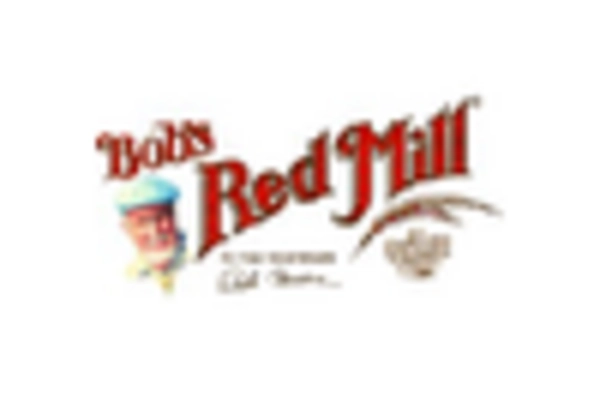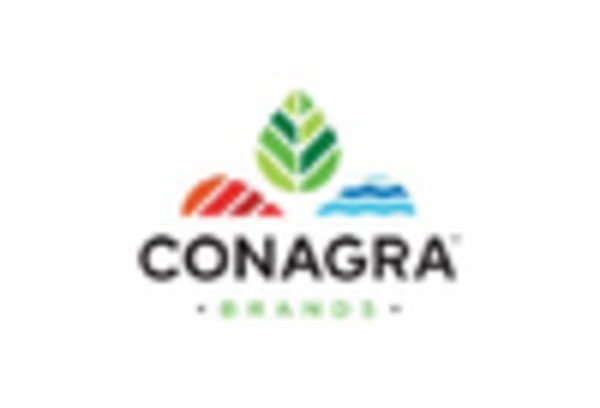Product Innovation and Variety
Innovation within the gluten-free sector is a notable driver for the United States Gluten-Free Products Market. Manufacturers are continuously developing new products that cater to diverse consumer tastes and preferences. This includes the introduction of gluten-free snacks, baked goods, and ready-to-eat meals that do not compromise on flavor or texture. The market has witnessed a proliferation of gluten-free alternatives, with an estimated 30% of new product launches in the food sector being gluten-free. This trend not only attracts gluten-sensitive consumers but also appeals to those without dietary restrictions who are curious about gluten-free options. As a result, the United States Gluten-Free Products Market is experiencing a dynamic transformation, characterized by a rich variety of offerings.
E-commerce Growth and Online Shopping
The rise of e-commerce has significantly impacted the United States Gluten-Free Products Market. With more consumers turning to online shopping for convenience, the availability of gluten-free products has expanded dramatically. Online platforms provide a wider selection of gluten-free items, often at competitive prices, which enhances accessibility for consumers. According to recent data, online sales of gluten-free products have increased by over 25% in the past year alone. This trend is particularly appealing to those who may have limited access to gluten-free options in local stores. As e-commerce continues to grow, it is likely to play a crucial role in shaping the future landscape of the United States Gluten-Free Products Market.
Health Awareness and Dietary Preferences
The increasing awareness of health and wellness among consumers appears to be a primary driver for the United States Gluten-Free Products Market. Many individuals are adopting gluten-free diets not only due to celiac disease but also as a lifestyle choice. This shift in dietary preferences is reflected in the market, with a reported growth rate of approximately 9.5% annually. Consumers are increasingly seeking products that align with their health goals, leading to a surge in demand for gluten-free options across various food categories. Retailers are responding by expanding their gluten-free product lines, which further fuels market growth. As health consciousness continues to rise, the United States Gluten-Free Products Market is likely to see sustained interest and investment.
Increased Awareness of Gluten Sensitivity
The growing recognition of gluten sensitivity and its associated health implications is a significant driver for the United States Gluten-Free Products Market. As more individuals become aware of gluten-related disorders, including non-celiac gluten sensitivity, the demand for gluten-free products is expected to rise. Educational campaigns and health initiatives have contributed to this awareness, leading to a more informed consumer base. Market Research Future indicates that approximately 18 million Americans may experience gluten sensitivity, which underscores the potential for growth within the gluten-free sector. This heightened awareness is likely to encourage manufacturers to innovate and expand their gluten-free offerings, further propelling the United States Gluten-Free Products Market.
Regulatory Support and Labeling Standards
Regulatory frameworks and labeling standards play a pivotal role in the United States Gluten-Free Products Market. The establishment of clear guidelines for gluten-free labeling has instilled consumer confidence in gluten-free products. The FDA's definition of gluten-free has provided a benchmark for manufacturers, ensuring that products meet specific safety standards. This regulatory support not only protects consumers but also encourages manufacturers to invest in gluten-free product development. As a result, the market is likely to see an increase in the number of certified gluten-free products, which could enhance consumer trust and drive sales. The alignment of regulatory measures with consumer expectations is expected to foster growth within the United States Gluten-Free Products Market.

















Leave a Comment